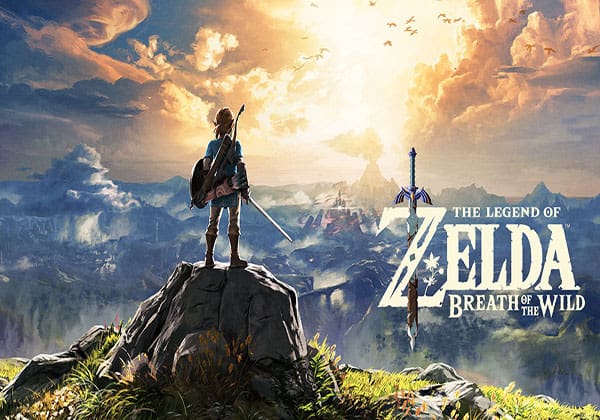Like many, many others during the lockdowns of the past year, I lost my drive. I forgot how to act socially, I often felt paranoid or physically ill while walking around outdoors, and I struggled to find the motivation to attend to simple responsibilities that I wouldn’t have thought twice about previously. Enter Breath of the Wild, the video game which somehow encompassed everything I’d been missing during lockdown. From the moment I started playing in 2020, till my defeat of the final boss and completion of the main story in 2021, the game actively helped me regain my passion for life that was lost while locked down.
A reminder to love the outdoors
Right from the very beginning, the game draws you into its charm with the opening scene, in which protagonist Link bursts forth from a cave into a soaring, open wilderness after a 100 year slumber. This scene immediately resonated with me; watching Link finally leave his dark, dingy cell after a century of sleep made the vast wilderness before him seem all the more enticing. Experiencing this opening during a lockdown felt especially empowering, as I imagined the moment I’d finally leave my home and enter the wide open world once more. The world map in Breath of the Wild is huge, spanning 15 regions, each with their own unique climate and environmental features. Every inch of this world is beautiful, in an art style that combines realism and stylised animation through cel shading, a rendering technique used to make 3D-animated objects appear somewhat 2-dimensional, it mimics the stylings of traditional anime. Despite the art style, the environments themselves are very much based on our reality, with some landscapes bearing resemblance to areas of my own outer-Sydney suburb. The familiarity of these landscapes and interactions made me feel as if I were walking around a nearby national park or nature reserve, and played a key role in staving off feelings of physical isolation during the weeks spent entirely indoors. Lately, on the rare days when I leave the house for essential exercise, I find myself fully absorbing my surroundings and savouring the journey more than I would have before.
A reminder to meet new people
Upon becoming fully immersed into the world of Hyrule, I discovered a number of miniature societies, each of a different race and with a unique culture, scattered throughout the world. While merely traversing the vast map was an enjoyable escape from the mundanity of physical lockdown in and of itself, it was these settlements and their quirky residents which eased my feelings of social isolation. Most of these residents served as vehicles for side quests, however I would often find myself talking to NPC townsfolk just for the sake of it, taking delight in their snarky quips and eclectic personalities. Perhaps the most memorable side quest, called ‘From the Ground Up’, requires the player to build and populate an entirely new settlement: Tarrey Town. There’s something uniquely hopeful about this quest, both in the context of Hyrule and Australia. While our own Calamity Ganon might have laid waste to Sydney, there will always be a chance to rebuild again. But apart from new settlements like Tarrey Town and established villages like Hateno, Hyrule is empty. Settlements are few and the roads are sparsely populated. But when I caught the sight of a fellow traveller or merchant in the distance, it made the game all the more meaningful. Sydney can often feel like this as well: roads empty, paths bare, and town deathly quiet. But when you spy a fellow suburban soul, you can’t help but exchange a masked acknowledgement of the other.
A reminder to love problem solving
Lockdown has shattered my productivity. I felt as if I couldn’t muster up the motivation to complete intellectually challenging tasks, such as writing a paper or solving a difficult equation. This is where Breath of the Wild and its 120 puzzle shrines come in handy. These puzzles rely on the manipulation of the game’s unique physics and chemistry system. The process of applying fundamental principles of physics and logic to solve these puzzles was both highly enjoyable, and gave me a sense of accomplishment. This mindset naturally bled into my real life, in which everyday tasks such as completing an assignment, or searching for a job became challenges, which could be just as enjoyable and rewarding to complete as the actual outcome.
Looking to my friends and peers, I can see them following a similar pattern, choosing to play social, relaxed games like Animal Crossing or the open-world adventure, Minecraft. As New South Wales emerges from lockdown, I’m thankful for the quiet reminders Breath of the Wild has given me and can only hope that we too can rebuild from the ground up.





